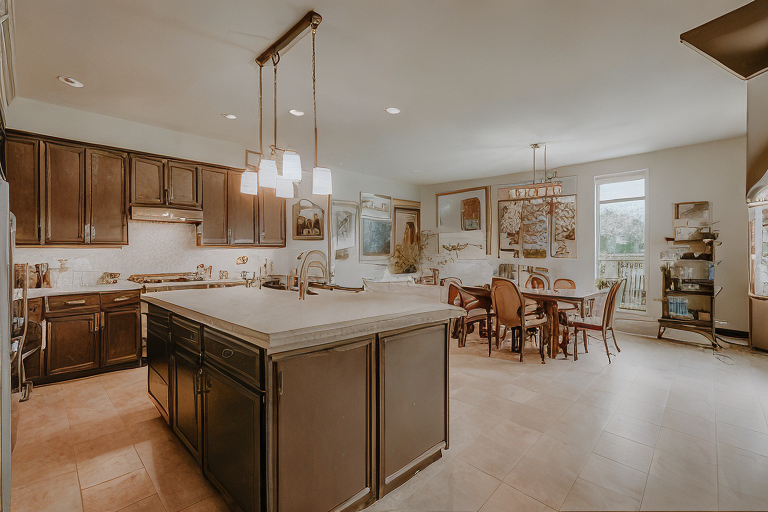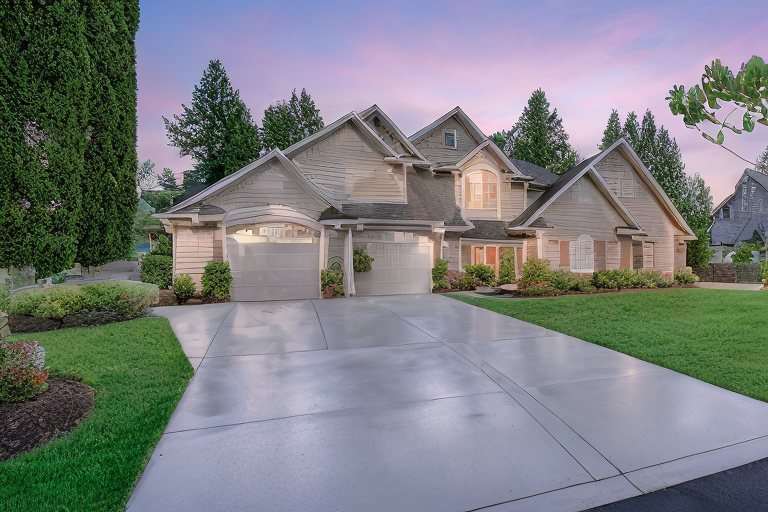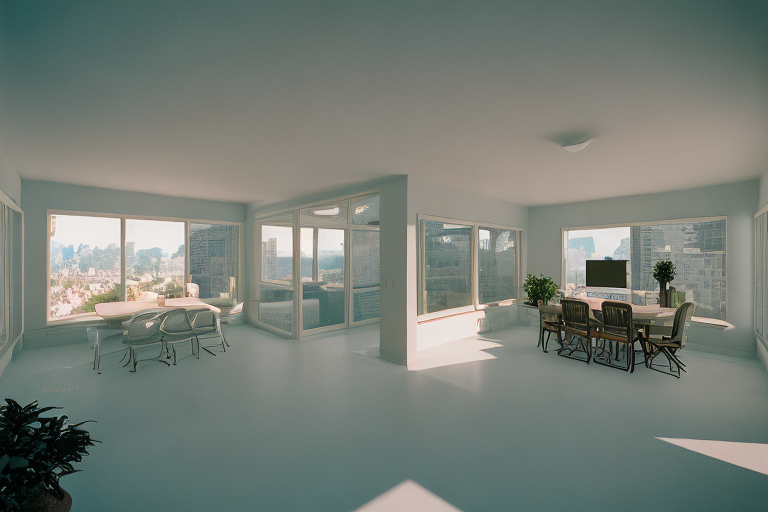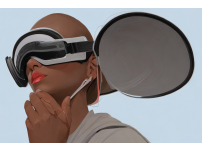부동산 업계의 가상 현실: 부동산 전시 및 시장 분석 개선(Virtual Reality in the Real Estate In…
본문

가상 현실(VR) 기술은 부동산을 보여주고 시장 데이터를 분석하는 새로운 방법을 제공함으로써 부동산 산업에 혁명을 일으킬 수 있는 잠재력을 가지고 있습니다. VR은 부동산 보기 경험을 향상시키는 기능을 가지고 있어 구매자들이 구매하기 전에 집에서 자신을 상상하는 것을 더 쉽고 편리하게 만듭니다. 또한, VR은 부동산 전문가들이 트렌드를 분석하고 정보에 입각한 결정을 내릴 수 있도록 하는 귀중한 시장 통찰력을 제공할 수 있습니다.
부동산에서 VR이 사용되는 주요 방법 중 하나는 부동산 표시를 개선하는 것입니다. 구매자가 부동산을 가상으로 걸어 다닐 수 있게 함으로써 VR은 보다 몰입적이고 매력적인 보기 경험을 제공하여 여러 물리적 보기의 필요성을 줄이고 구매자와 판매자 모두에게 시간을 절약할 수 있습니다. VR은 또한 아직 지어지지 않았거나 아직 건설 중인 부동산을 보여주는 데 사용될 수 있으며, 구매자들에게 그것이 존재하기도 전에 그들의 미래의 집을 엿볼 수 있습니다.
VR은 또한 부동산 시장 데이터를 분석하는 데 사용되어 업계의 동향과 패턴에 대한 귀중한 통찰력을 제공합니다. 예를 들어, VR은 판매 데이터와 부동산 가격을 시각화하고 분석하는 데 사용될 수 있으며, 부동산 전문가들이 어디에 투자할지에 대한 정보에 입각한 결정을 내리는 데 도움이 됩니다. 또한, VR은 구매자에게 지역에 대한 감각을 제공하고 구매에 대한 정보에 입각한 결정을 내리는 데 도움이 되는 이웃의 가상 표현을 만드는 데도 사용될 수 있습니다.

한국에서, VR 기술은 SK 텔레콤과 LG U+를 포함한 몇몇 부동산 회사들에 의해 채택되었습니다. 이러한 회사들은 VR을 사용하여 부동산 전시를 개선하고 부동산의 가상 투어를 제공하여 구매자와 판매자 모두에게 보다 편리하고 효율적인 뷰잉 프로세스를 제공하고 있습니다. 또 다른 예는 서울시가 부동산 시장 동향을 분석하고 정보에 입각한 투자 결정을 내리기 위해 VR을 사용하는 것입니다.
결론적으로, VR 기술은 부동산을 보여주고 시장 데이터를 분석하는 새롭고 개선된 방법을 제공함으로써 부동산 산업에 상당한 영향을 미칠 것입니다. VR이 계속 발전하고 접근성이 높아짐에 따라, 우리는 미래에 훨씬 더 혁신적인 기술 사용을 보게 될 것이며, 부동산을 사고 파는 방식을 더욱 변화시킬 것입니다.
부동산 전시 및 시장 분석을 개선하는 것 외에도, VR은 설계 프로세스의 합리화, 비용 절감 및 지속 가능성 향상과 같은 부동산 업계에서 많은 다른 이점을 제공할 수 있는 잠재력을 가지고 있습니다. 예를 들어, VR을 사용하여 공사가 시작되기 전에 건물의 설계 옵션을 시각화하고 테스트하여 물리적 프로토타입의 필요성을 줄이고 더 빠르고 효율적인 의사 결정을 가능하게 할 수 있습니다.

또한 VR은 여행 경비와 같은 실물 자산 전시와 관련된 비용을 줄일 수 있을 뿐만 아니라 실물 보기의 필요성을 줄임으로써 부동산과 관련된 탄소 발자국을 줄일 수 있습니다. 부동산 회사들은 VR을 활용함으로써 구매자와 판매자에게 보다 친환경적이고 비용 효율적인 솔루션을 제공하여 기술의 이점을 더욱 향상시킬 수 있습니다.
그러나, 잠재적인 이점에도 불구하고, VR 기술은 도전 과제가 없는 것은 아니다. 예를 들어, VR 하드웨어와 소프트웨어는 일부 기업과 개인에 대한 접근성을 제한하여 비용이 많이 들 수 있습니다. 게다가, 눈의 피로와 멀미와 같은, VR이 인간의 행동과 건강에 미치는 영향에 대한 우려가 있습니다.
결론적으로, VR은 부동산 전시, 시장 분석, 그리고 전반적인 매매 과정을 개선함으로써 부동산 산업을 변화시킬 수 있는 잠재력을 가지고 있습니다. 여전히 해결해야 할 과제가 있지만, VR의 이점은 부동산 업계의 기업과 개인이 탐구할 가치가 있는 기술로 만듭니다. VR이 계속해서 발전함에 따라, 우리는 기술의 훨씬 더 혁신적인 사용을 보게 될 것이며, 산업에 대한 잠재적인 영향을 더욱 강화할 것입니다.
Virtual reality (VR) technology has the potential to revolutionize the real estate industry by offering new ways of showcasing properties and analyzing market data. VR has the ability to enhance the property viewing experience, making it easier and more convenient for buyers to imagine themselves in a home before making a purchase. Additionally, VR can also provide valuable market insights, allowing real estate professionals to analyze trends and make informed decisions.
One of the primary ways VR is being used in real estate is to improve property showings. By allowing buyers to virtually walk through a property, VR can provide a more immersive and engaging viewing experience, reducing the need for multiple physical viewings and saving time for both buyers and sellers. VR can also be used to showcase properties that are not yet built or still under construction, offering buyers a glimpse into their future home before it even exists.
VR is also being used to analyze real estate market data, providing valuable insights into trends and patterns in the industry. For example, VR can be used to visualize and analyze sales data and property prices, helping real estate professionals make informed decisions about where to invest. Additionally, VR can also be used to create virtual representations of neighborhoods, providing buyers with a sense of the local area and helping them make informed decisions about their purchase.
In Korea, VR technology has been adopted by several real estate firms, including SK Telecom and LG U+. These companies are using VR to enhance property showings and offer virtual tours of properties, making the viewing process more convenient and efficient for both buyers and sellers. Another example is the use of VR by the Seoul Metropolitan Government to analyze real estate market trends and make informed investment decisions.
In conclusion, VR technology is poised to have a significant impact on the real estate industry, offering new and improved ways of showcasing properties and analyzing market data. As VR continues to evolve and become more accessible, it is likely that we will see even more innovative uses of the technology in the future, further transforming the way real estate is bought and sold.
In addition to improving property showings and market analysis, VR has the potential to offer many other benefits in the real estate industry, such as streamlining the design process, reducing costs, and improving sustainability. For example, VR can be used to visualize and test design options for a property before construction begins, reducing the need for physical prototypes and allowing for faster and more efficient decision-making.
Moreover, VR can also help reduce costs associated with physical property showings, such as travel expenses, as well as reducing the carbon footprint associated with real estate by reducing the need for physical viewings. By leveraging VR, real estate firms can offer a more eco-friendly and cost-effective solution for buyers and sellers, further enhancing the benefits of the technology.
However, despite its potential benefits, VR technology is not without its challenges. For example, VR hardware and software can be expensive, limiting its accessibility to some businesses and individuals. Additionally, there are concerns about the impact of VR on human behavior and health, such as eye strain and motion sickness.
In conclusion, VR has the potential to transform the real estate industry by improving property showings, market analysis, and the overall buying and selling process. While there are still challenges to be addressed, the benefits of VR make it a technology worth exploring for businesses and individuals in the real estate industry. As VR continues to evolve, it is likely that we will see even more innovative uses of the technology, further enhancing its potential impact on the industry.














댓글목록 0